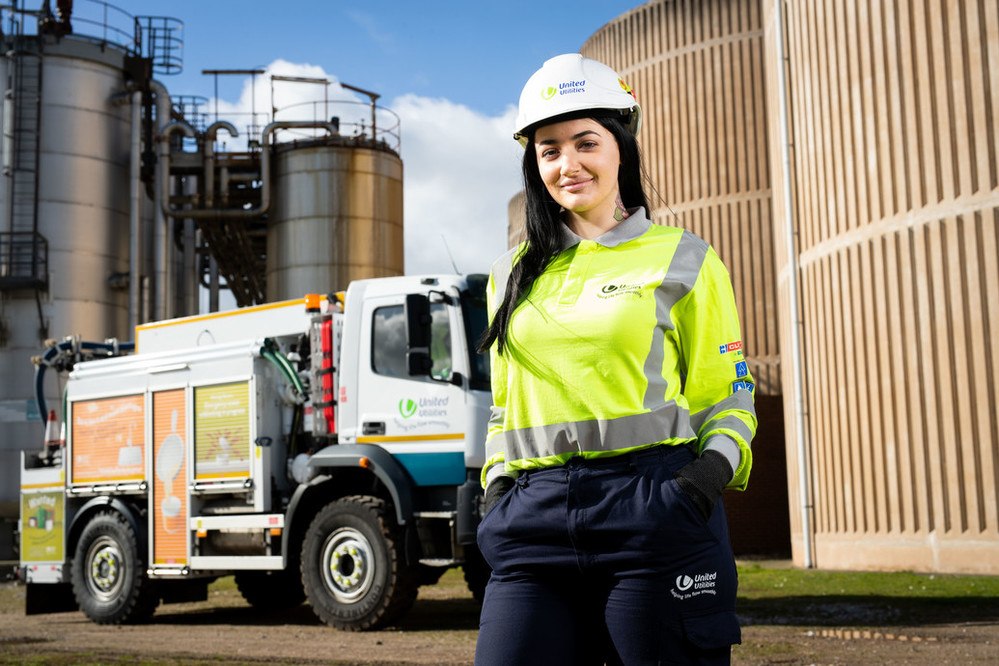

United Utilities analyses billions of rows of data to improve water supply with Tableau
250,000 analytics queries processed every day by Tableau
£850,000 reduction in energy costs per year
50% reduction in unallocated time in workforce schedules
Turning on a tap to fill a kettle with water is a simple task - and one we take for granted. But supplying clean water to our homes and workplaces is anything but simple. United Utilities rises to this challenge every single day. Thanks to a complex network of pipes, sewers, reservoirs and pumps, it provides water and wastewater services to around seven million people across the North West of England.
Here, Tim Stanley, Head of Data and Analytics at United Utilities, explains how Tableau empowers more than 2,000 employees to make smarter decisions and drive better outcomes. From energy consumption to reservoir capacity, Tim discusses the impact of richer analytics on safeguarding water supplies and boosting performance.
What role does data play at United Utilities?
It’s pivotal. Our operations are highly regulated, which means we have to report on our performance to lots of different stakeholders - and be able to demonstrate the data behind every single metric. We also want to help our teams make smarter decisions by extracting more value from our data - whether it involves rainfall levels or customer service response times. To support our data science ambitions, we needed a business intelligence solution that could work across multiple systems and data formats. With Tableau, we can aggregate and visualise the analysis of billions of rows of data from more than 30 sources, including AI sensors on our pipes and mobile apps used by our field workers. In the past, people created their own version of the truth using different data sources. With Tableau, everyone can now access the same joined-up story.
How does Tableau empower your teams?
Around 2,000 employees use Tableau - it’s become critical for accessing insights into our business. We’ve let our citizen data scientists come up with their own analytics and visualisations. For example, one of the team created a daily dashboard recently for tracking reservoir levels, which includes weather forecasts and water consumption data. This helps us manage potential water use increases and possible shortages during hot weather. To make sure we are generating the most relevant analytics for the right teams, we monitor the volume of traffic to different Tableau dashboards. It’s a bit like a TV ratings systems! The customer service analytics are really popular and receive a couple of thousand hits per day.
We now have a daily view of energy utilisation across all our field sites and power sources, which has helped us decrease our energy consumption by up to 15% at target sites and reduce overall costs by more than £850,000 per annum.
How have smarter analytics improved performance?
It’s not just about improving performance, it’s about boosting efficiency. We want to save £110 million by 2025 while also reducing customers’ bills. To achieve this, we need to find ways to use our resources more effectively. With Tableau, we can save both time and money. For example, we now have a daily view of energy utilisation across all our field sites and power sources, which has helped us decrease our energy consumption by up to 15% at target sites and reduce overall costs by more than £850,000 per annum. By visualising the time spent on operational activities, we’ve also been able to better understand the work of our field teams, resulting in a 50% improvement in unallocated schedule time. It’s the first time we’ve had this level of visibility of team activities. By optimising how we use our resources, we can provide a faster response to major incidents.
How did Tableau help you respond to the COVID-19 pandemic?
Our consumption of water changed drastically during 2020 as fewer people were commuting to work or taking holidays. This intensified during the summer months, which put additional demand on both our water and wastewater services. We don’t want to just improve outcomes for our current customers; we want to safeguard water supply for future generations. And that means we need to better understand supply and demand. With Tableau, we can analyse changes in consumption and predict if we have sufficient resources to meet demand.
What are your future plans for Tableau at United Utilities?
We have already unlocked a lot of insight - especially through the integration with Salesforce, which is used by our field workers and contact centre agents. We want to explore this link further by tracking customer support trends, which will help us accelerate our response times and identify issues on the water and wastewater networks earlier.